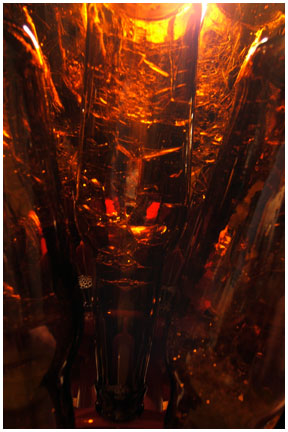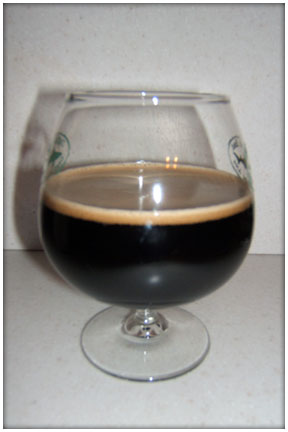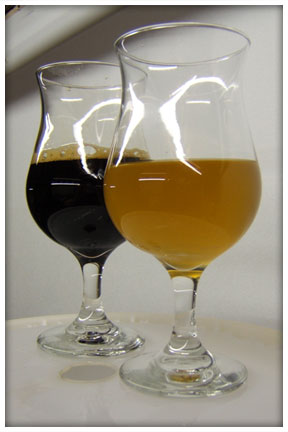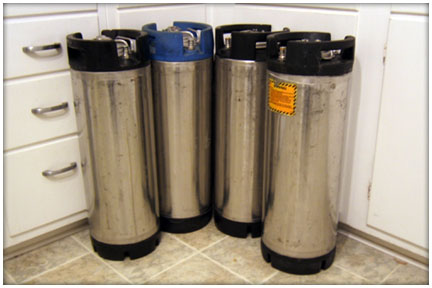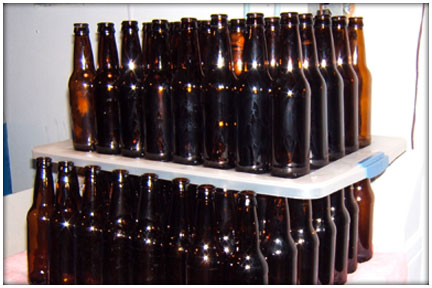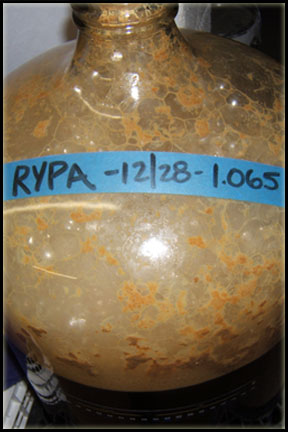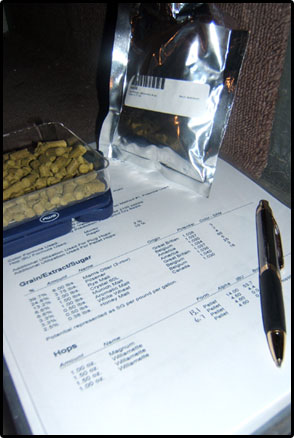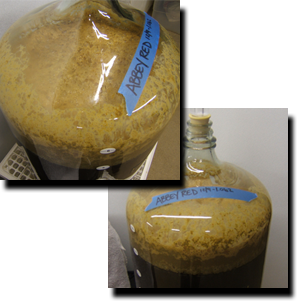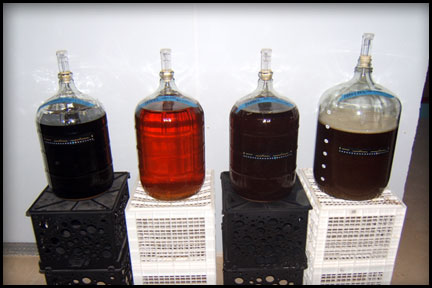Looks like I just brewed the last beer for 2007, a Rye IPA or RYPA. It’s been a good year beer-wise, actually just based on number of batches (19 brewed, 25 total variations) it has been the best year yet!

Today was a pretty good brew day, five hours and fifteen minutes and 87 songs on the iPod. It was the first time I have used rye, it was the first time I tried a new “filtering” technique, I didn’t run into any problems, I transfered the Abbey Ale, I got to re-sample this years Cider (still needs to come up on carbonation), and I was off from work today – not bad. With the ground water being as cold as it is now my chilling time has really been reduced and as long as I stay on top of the janitorial through out the day I have become pretty close to hitting five hour days recently, shweet.
I’ve been meaning to try a recipe with rye now for a while. I have judged a couple recently, all of them IPAs, and I thought that would be fun to try. I’ve heard horror stories about people using rye and having awful stuck mashes or that the grain is so oily (I saw no indication of this) that it destroys head retention. We’ll see. I thought the spent grains smelt of pancakes and the boiling wort smelt of maple syrup so who knows what flavors are going to emerge.
I’ve been trying to think of a way to filter my wort from the kettle before it reaches the carboy. The biggest issue I have is with my pellet hops, especially in a hoppy beer like an IPA. With whole leaf hops when used in conjunction with a false bottom they form their own filter bed and the wort runs very clear. With pellet hops they are broken up into iddy-biddy pieces and are very difficult to restrain. I used to use nylon bags to put the hops in but this lowers their effective rate – clearer wort but less efficient hop usage, more expensive plus it was never that clear. People have talked about using a stainless steel scrubby as a filter, but I have never been able to figure out a way to attach the scrubby to the back of the spigot. I use a Bazooka screen in my mash tun to filter the grain matter from the liquid, so recently I have been toying with the idea of buying one for the kettle and seeing how that works, but this hasn’t happened yet. So today I figured I give the scrubby method a shot. What I did to keep it in place instead of attaching it was to lower it down on the inside of the spigot post chilling the wort with my long stainless steel spoon and actually hold it in place with the spoon. I figured out a way to jam the spoon in between the lid, kettle wall, and wort chiller and it actually held itself. Surprisingly it seemed to work pretty well. Except for maybe the first and last quart or so it ran almost crystal clear and never seemed to slow or clog. I did lose some wort by using this method, about a half gallon, but I guess that would have been a pretty trubby half gallon anyway that would have basically fallen out of suspension. So it seems like a pretty neat idea that I will have to try again, though I still think I may order another Bazooka screen.
 


Oh yeah, the yeast seemed to be doing fine. I originally had a sanitized digital probe that I left in the starter to moderate the temperature. When ever it fell to low (60-62) I would soak the beaker in a hot bath to raise the temperature up higher (75ish) to help stimulate the yeast. I had to babysit it a little bit soaking it maybe three times over 36 hours, but appears as if it will be doing just fine. If I don’t see visual fermentation within 24 hours (longer than I am typically patient for) I will take out an insurance policy and dump a pack of neutral dry ale yeast into it too.
